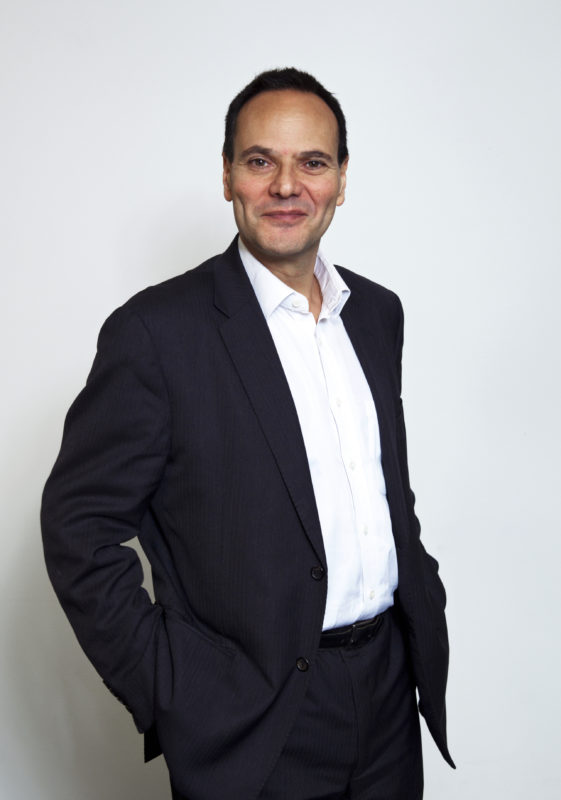Ahead of reports at the end of May about various bids for a stake in Kantar, we talked to Eric Salama, Global CEO of Kantar, about the rebranding and upcoming sale of his company, as well as the state of the industry in general.

In March it was announced that from 2 April Kantar delivers “all services and offerings under the Kantar brand name”. This meant the end for established brands like TNS, Millward Brown, Lightspeed, Worldpanel and IMRB. Earlier it was announced that Kantar’s owner WPP is planning to sell the insights firm to an investor this summer. It may therefore be surprising to some that Kantar decided to rebrand everything as Kantar, knowing that all or part of the company will be sold. But Salama stresses that the rebranding has nothing to do with the sale. “Our organisational and brand evolution has been going on for ten years. We rebranded everything with a Kantar prefix three years ago and this was a natural next step to make ourselves simpler for clients and partners to deal with, to increase the impact of our digital presence, and to send a powerful signal to our employees that we have zero tolerance for any internal silos which get in the way of them developing their careers or delivering the best of Kantar.”
One brand
Salama emphasises that the company has taken the attitude that investor and/or sale conversations will not get in the way of doing the right things for the business and for its clients and employees. “We are not slowing down or stopping anything.” One possible consequence of a sale could be the fragmentation of the company, but this is a scenario he is quick to dismiss. “We have no intention of breaking up Kantar. Our conversations with potential buyers and investors in the business are about the whole of Kantar.”
We have no intention of breaking up Kantar. Our conversations with potential buyers and investors in the business are about the whole of Kantar.
In May the company brought its global panels and sample offer together into a new respondent network, Kantar Profiles Network. Meanwhile, the more recent creations Kantar Consulting, Kantar Health, Kantar Media and Kantar Public, as well as all the country-specific brands, have been dropped. “From an external brand point of view we only have one brand – Kantar. We have dropped everything else,” explains Salama. “From an internal point of view we still have management teams and structures responsible for developing and nurturing offers, skills, specialisms, and expertise. So, we have a media division, a profiles division etc. But we also have enabling functions – HR, finance, marketing, operations, IT – which are Kantar-wide functions. We have client teams which are integrated Kantar teams for some of our global clients, such as Google, as well as big local accounts like Globo in Brazil or Mengniu in China. And we have a growing number of offers – such as Marketplace – which have been developed as Kantar offers.”
Marketplace
Kantar launched Marketplace in March. It’s an on-demand self-service platform available in over 40 markets around the world. It currently offers creative testing through a suite of the Link copy testing solution products, at a fraction of the price and time of full Link. It will soon have a DIY custom survey offer, Salama promises. A range of other tools and data slices will be added as the year progresses. “When we originally developed fully automated solutions, we thought they would appeal to SME’s who couldn’t afford our full-service offerings. But we have seen how big global clients like Coca-Cola have adopted much more of a portfolio approach. They’re using our automated suite for some needs and our full-service suite for others, depending on the depth of diagnosis and human expertise they require.”
He adds that Marketplace offers the same validated approaches, with the same global benchmarks delivered through a dashboard within 24 hours of commissioning, but it doesn’t have the depth of diagnosis or expertise. “Clients love having the choice and it has enabled us to develop new client usage cases, such as ad agencies testing an ad before they present it to a client.”
Clients love having the choice and it has enabled us to develop new client usage cases, such as ad agencies testing an ad before they present it to a client.
Turnaround
In the first quarter of 2019 Kantar revenue outperformed the rest of the WPP group. The company has seen a continuation of strong double-digit growth in some geographies, such as India and LATAM. Salama also reports growth for some offers, namely analytics, media and content ROI, trade-promotion optimisation, behavioural data and insights, as well as growth for some clients. “But we’ve also seen a turnaround in some critical places,” he adds. “We’ve seen a return to growth in our insights division, with growing momentum behind new or refreshed offers like Holistic Brand Guidance (the company’s next-generation brand-tracking solution, ed.), in markets like France, and for a range of CPG clients whose budgets have been challenged in the past few years. We continue to put our focus on client impact, on realtime actionable insights and on bringing the best of Kantar to our clients.”
Aside from Latin America and India, Kantar has shown particularly strong growth in Asia Pacific and the Middle East. When asked if this growth can continue even whilst a formal process to sell the company is underway, Salama doesn’t hesitate: “Of course. We have been open and transparent internally about what we are doing and why, and people understand the benefits we are seeking to achieve. We have not seen any change in our people’s attrition rates over the past year. And I am proud of the way that they have responded in keeping focused on our clients and in continuing to innovate and improve the way we deliver, and what we deliver. We won GRIT’s (GreenBook Research Industry Trends, ed.) most innovative agency of the year last year and our people continue to focus on how we can become faster, more agile for the benefits of clients, and innovating in ways which are relevant and compelling for them.”
Speed and agility
Meanwhile, we see in general that the top five market research companies are struggling with growth. One explanation is that they struggle to stay abreast with new information providers in the digital arena.
Salama raises other issues too. “I’m sure that there will be specific company reasons which I’m not aware of, but generally I would say that the bigger companies:
a) have the biggest client budgets and have been the focus of procurement cuts, especially amongst the multinational CPG companies,
b) have been seen as slower than start-ups,
c) have been more focused on multinationals rather than local companies.
For our part we have made huge strides in making our offers relevant and compelling for local companies, amongst whom we now see fast growth, and in behaving like start-ups in our speed and agility. We’ve got a way to go on the latter but as the example of Marketplace shows, we are getting there. I’m more optimistic for our industry and for Kantar than I’ve ever been.”
Focus on client impact, understand how much pressure our clients are under and how much we need to speed up and simplify
Three wishes
Asked which three wishes he would have for the research and insights sector, he answers: “Focus on client impact, understand how much pressure our clients are under and how much we need to speed up and simplify; you know so much more about how to help clients grow than consultants but aren’t as revered as them – do something about it!”
Finally, on a personal note, Eric went through a horrifying ordeal earlier this year in London, when he was stabbed in an unprovoked attack. Thankfully, he is fully recuperated but it did put things in perspective for the Kantar boss. “I feel very lucky. It could have been a lot worse. I’m fine, fully recovered and back to playing football and cycling and travelling normally. It was a scary experience to be lying on the ground and thinking you might die but it was heart-warming to feel the love from so many people, some of whom I hadn’t seen for ages. And being in a major trauma ward for a week simply reinforced my view that I’m extremely lucky and that there are lots of other people going through much more hardship than I ever have.”


